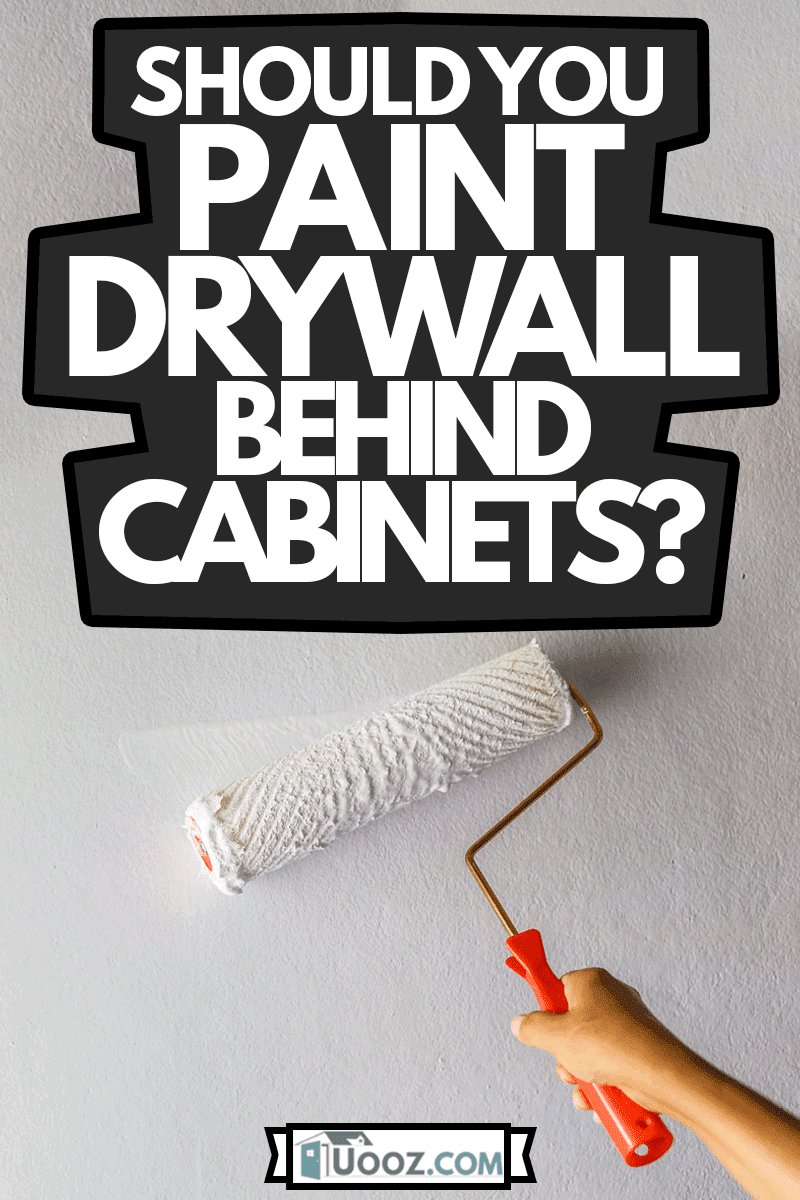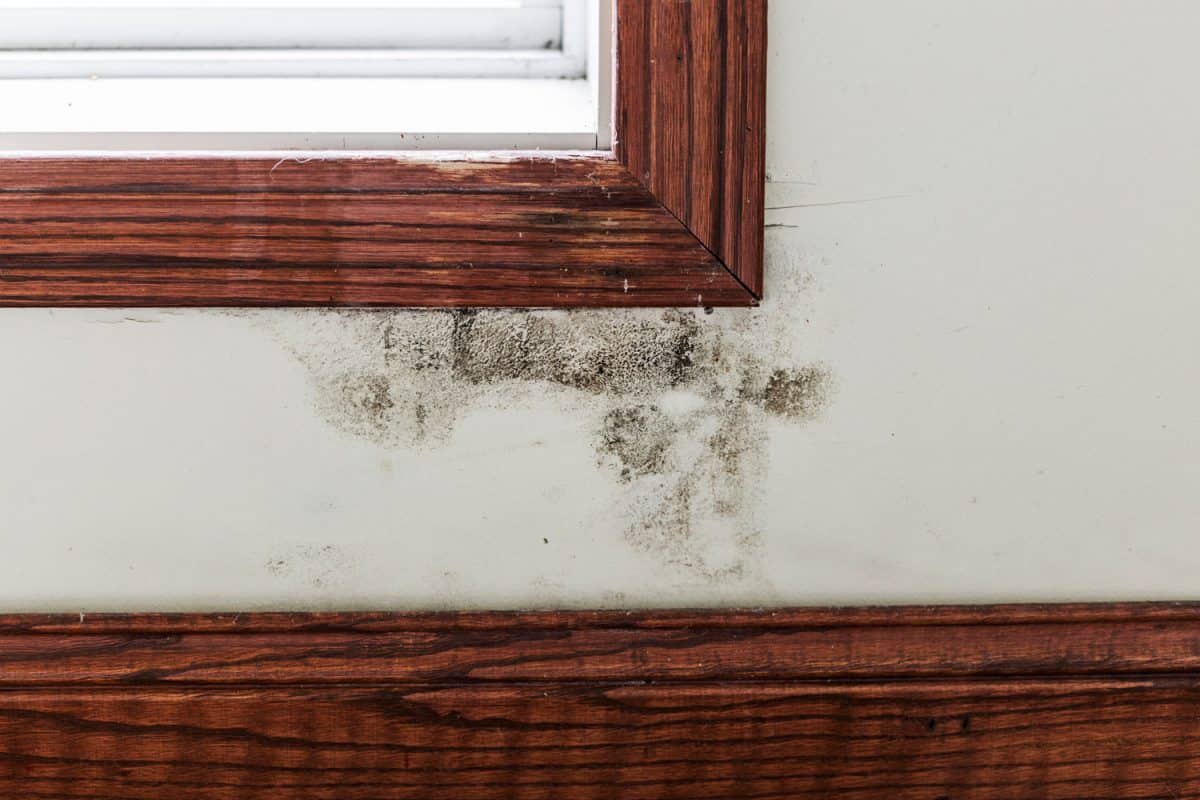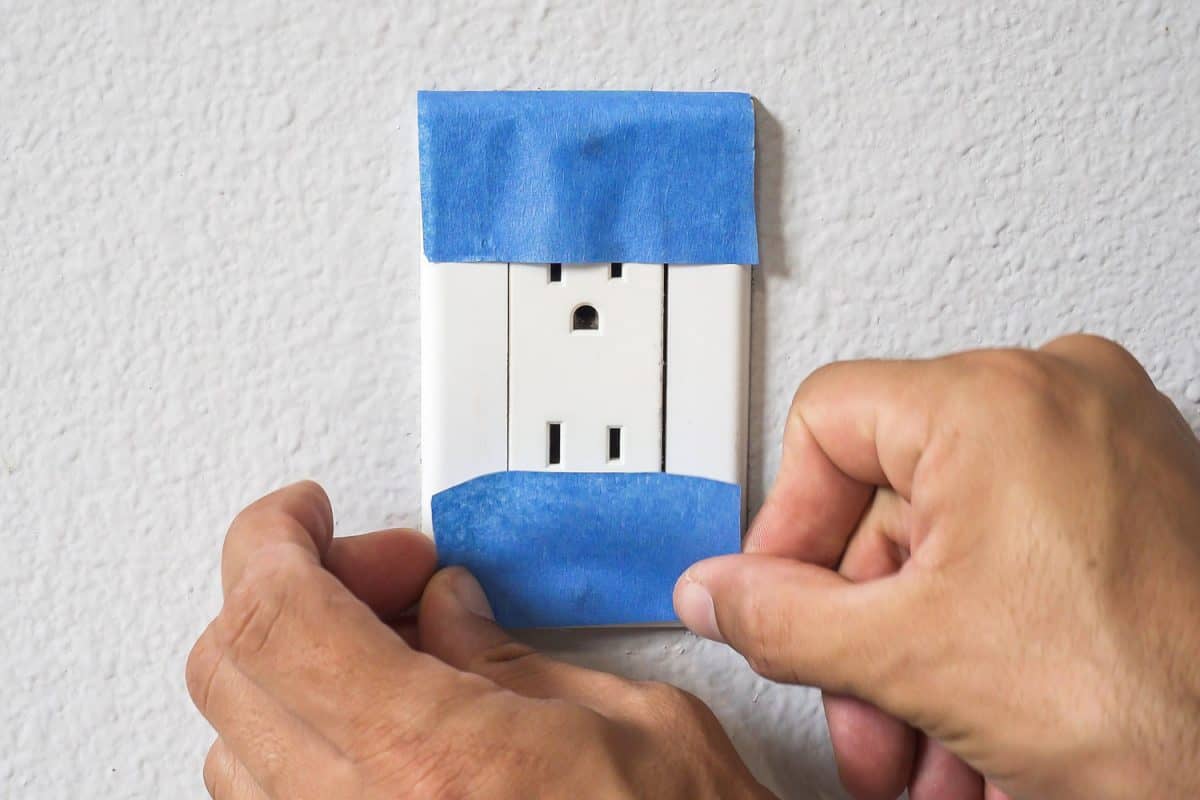If you're installing new drywall and cabinets, a common question is whether or not you have to paint the entire wall. After all, if the cabinets will cover the wall anyway, can't you leave that part bare? We've checked with people on both sides - cabinet installers and professional painters - for the verdict.
You should always paint the drywall behind the cabinets with at least a coat of primer. It's not technically necessary, but most people agree it's best to also paint the wall.
Use primer and a top coat of paint that matches the rest of the kitchen. This makes painting easier, protects the wall, and gives a better-looking finished appearance.
Keep reading, and we'll explain why. We'll cover why primer is essential. We'll also cover why painting the whole wall is ideal and well worth the little bit of extra paint you'll use. Plus, we'll give you some ideas for decorating your new cabinets - both for any visible cabinet backs and for the space above the cabinet.

Do You Finish Walls Behind Cabinets?
At the very least, at least cover the bare drywall with a coat of primer. This protects the wall. Bare drywall tends to absorb moisture, and you don't want to be pulling out your cabinets to fix this later. Interior drywall has nearly no water resistance without preventative measures like a primer.
Drywall that has absorbed moisture can cause the joints between sections of drywall to crack or fail. The drywall itself is more vulnerable to failure and swelling. And it can lead to mold growth - an expensive and unhealthy situation!

Should You Paint Walls Before Installing Kitchen Cabinets?
If you've ever heard the old adage, "A stitch in time saves nine," it's worth understanding that it applies to more than just sewing. Painting walls before installing kitchen cabinets is a perfect example.
Painting the walls with cabinets in place is much more difficult. Extra complications like masking mean that most people find painting open walls - before installing cabinets - is just the easier way to go.
Even professional cabinet installers generally agree that painting first gets the best results. Problems that require repainting, like dings or scratches after installation, are rare. And even if they do occur, it's still easier to cut in around cabinets when there's already at least one finish coat down.
However, if you're hiring a professional painter, you may want to discuss it with them. Some painters would rather take the time to deal with issues like masking and working around cabinets. This is because they know their job is "finished" when they're done. They won't be asked to retouch any issues, just if a cabinet leaves a surprise scrape.
Other painters are more than willing to come back for touch-ups later, considering it a fair trade-off. They save time by working before the cabinets go up and don't mind returning a second time to make sure everything is perfect when the kitchen is done. Talk to your painter to find out which method works best for them.

Do Kitchen Cabinets Have Backs?
There are a variety of styles for kitchen cabinets. Some cabinets have full-back panels, which is typically a sign of a high-quality, well-made kitchen cabinet. Good panels are made from heavy plywood, at least 3/8ths of an inch thick.
To save money, some cabinet manufacturers use cheaper methods. They may not use a back panel at all. Others make the panel out of less durable particleboard. To hang these kinds of cabinets, they generally also have some kind of rail or bracket on the back.
How Do You Decorate The Back Of Kitchen Cabinets?
If you don't like the bare-wood look of your kitchen cabinets, you can decorate the backs to look a bit more polished. One simple method is to paint the backs. You can paint it to match the walls or the cabinet fronts. For best results, avoid unusual colors that will draw attention to the cabinet backs and focus more on blending in.
Another simple solution is using adhesive wallpaper, like this one:
Click here to see this wallpaper on Amazon.
Just like paint, you don't want to draw too many eyes to the cabinet back. It's not a focal point. Don't use bright colors or crazy patterns. Pick something that helps the cabinets blend in, like matching the walls or the cabinet fronts.
How To Decorate Above The Kitchen Cabinets
In a small home, it's essential to make the most of the space. Wasted vertical spaces, like the area above the cabinets, offer a lot of decorating potential without taking up any more room.
Even if you aren't cramped for available square footage, that often useless area right above the cabinets seems to offer so much potential. But it's a bit of an awkward space, and it can be tough to decide exactly what to do with it.
There's no reason to let the space above the kitchen cabinets go to waste. We have some great suggestions for what you can try there instead:
Show Off A Collection
If you're a collector, use the space to make a great display. It's a perfect spot for things that you don't need readily accessible that are more for "show" than "touch."
Even if you don't have your own collection, you can find several like-minded art pieces. Try decorative plates like these:
Check out these bamboo wall plates on Amazon.
Put Up A Sign
Vintage signs make a nice touch or something that enhances the kitchen's decor. If nothing else, the theme of any kitchen is already "kitchen." Find an arty sign like this one to spell it out and add some appeal:
Click here to see this sign on Amazon.
Add A Wall Garland
Garlands are a really easy way to add something unusual and create an interesting focal point. One like this does double duty. Not only is it unique, but it lets you show off personal photos at the same time.
Click here to see this garland on Amazon.
Go For The Green
Plants add a sense of calm to any room. The kitchen especially can seem extra homey with some lovely greens. You can use real plants you already have. Or, if you don't want to have to climb up and down on counters to keep them watered, just use artificial ones.
Nice big bundles of artificial plants like these can fill up even a large above-cabinet space.
Click here to see these artificial plants on Amazon.
Fill The Space With Vases
A series of vases is a useful way to fill the space above the cabinets. If you pick a variety of vases that complement each other, you can add as many or as few as you need. Vases with enough aesthetic appeal don't necessarily need much in them, as they can be art all on their own.
Conversely, if you have high ceilings and a big area to fill, you have plenty of choices for vase fillers to complement the space.
Click here to see these apothecary-style vases on Amazon.
In Closing
When installing new drywall and cabinets, you should always paint the drywall with at least a coat of primer first. Even if the cabinets eventually cover the wall, primer is essential to protect the drywall from absorbing moisture and odors.
Many people paint the entire wall with a finish coat in addition. This saves you from having to mask and cut in when painting around cabinets later, making your painting considerably more complex and labor-intensive.
Painting also means that if your cabinets have no back, you won't have to worry about unfinished drywall peaking through every time you open the doors. Even if your cabinets have a full back, painting the wall is generally preferable. It gives better results and a higher quality finished product.
If you enjoyed this article, try:
Should Hardwood Flooring Match Kitchen Cabinets? [With 11 Stunning Combinations To Consider!]






